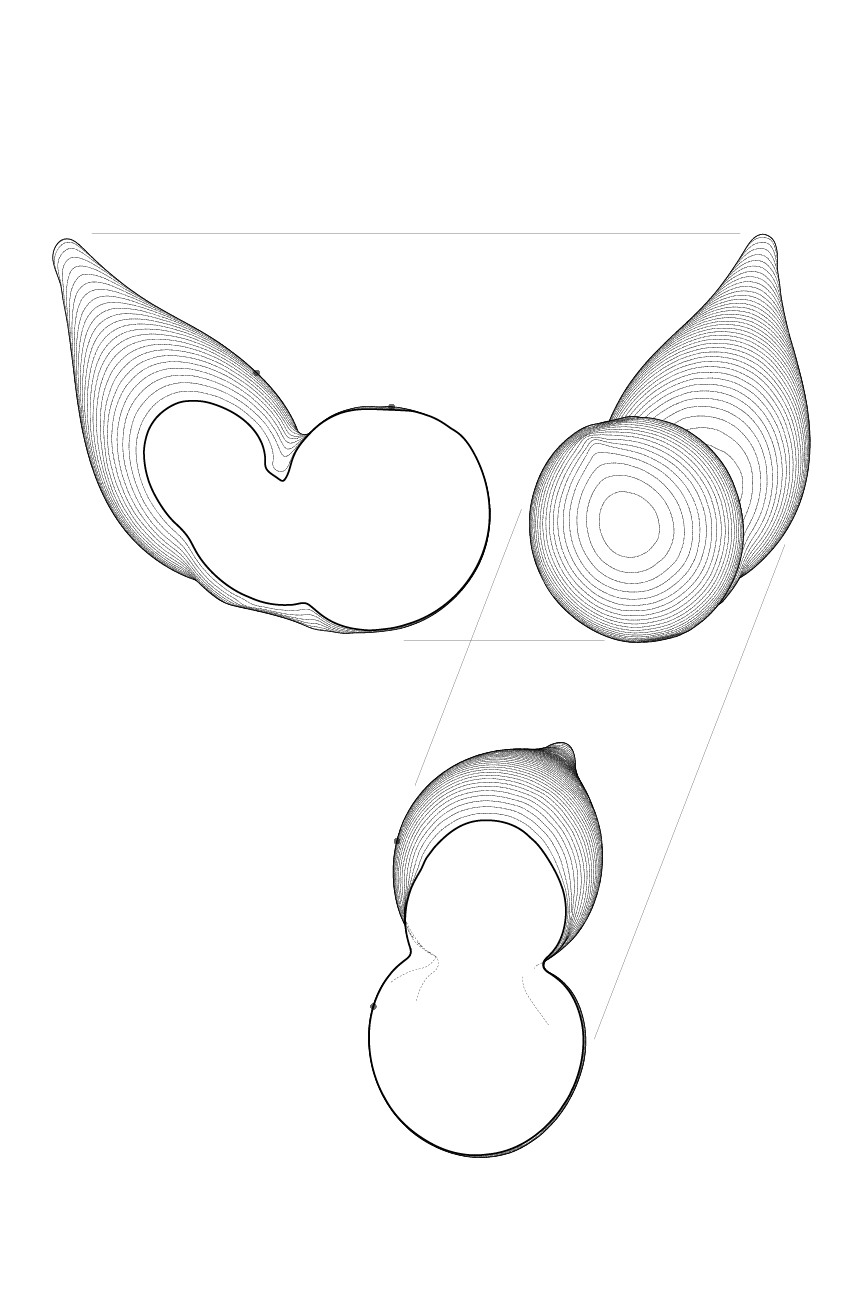
As in the the depiction of human form and gesture, there are a range of approaches to depicting organic "blob-like" forms in hard-line drawings. We understand "hard-line" drawings to mean those vector drawings that employ an extreme economy of means, and show only black lines on a white field. Using this spartan palette, forms may represented through the careful use of just a handful of line types. We describe these below.


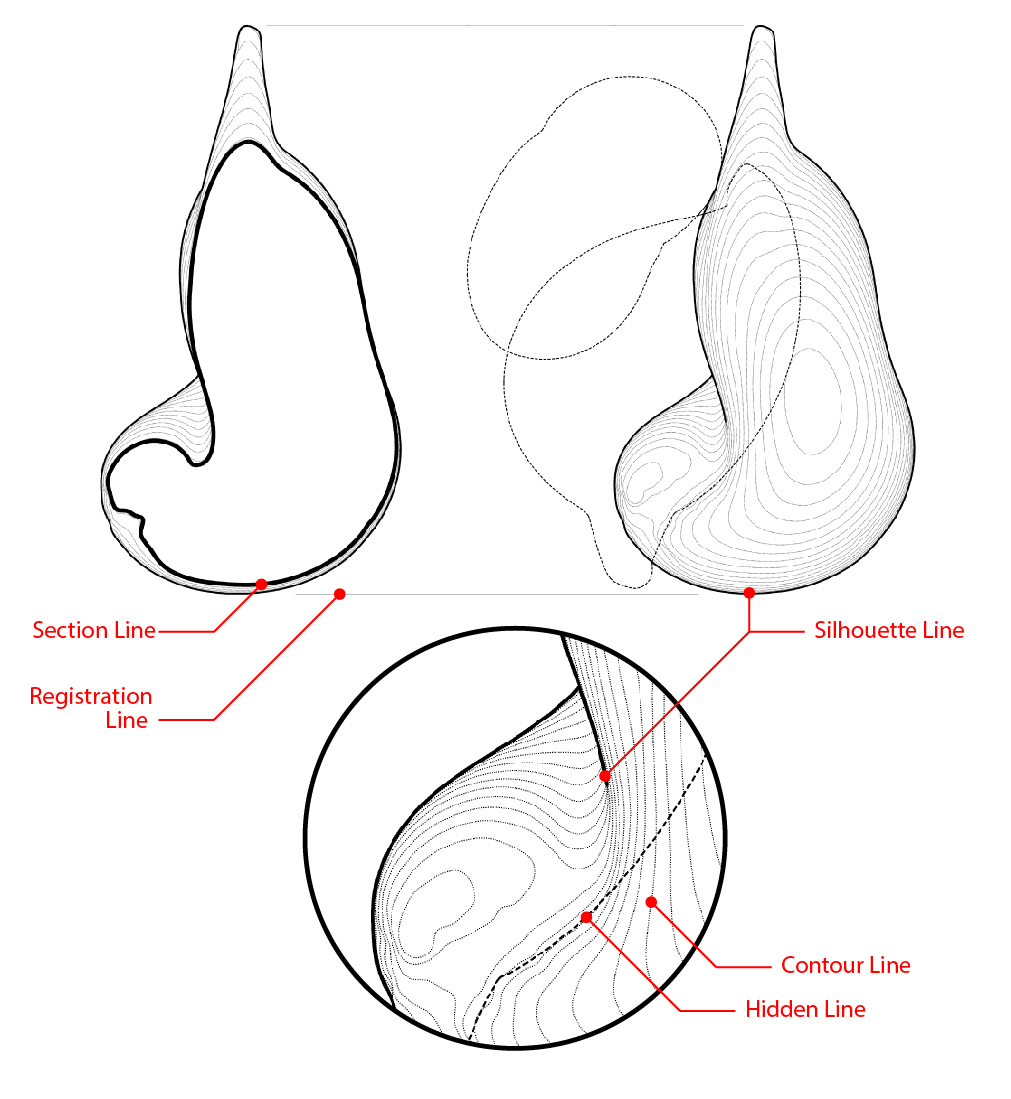
In overview, there are six line types we will use in the description of a blobby blob.
Section Lines / Cut Lines are used to describe the boundary of any forms that intersect with the cut plane of a section. These are drawn using the heaviest lines.
Silhouette Lines are used to describe the difference between two surfaces that are separated by some distance. These are drawn using medium-heavy lines.
Edge Lines. In this context there are no edge lines. When these do exist, they belong on layer PRINT / Light.
Contour / Surface Lines are, in this context, used to describe the surface geometry of the blobby form. These are drawn using lightly dotted lines.
Hidden Lines are used to describe any important geometry that has been obscured or "cut away" by a cut plane. These are drawn using lightly dashed lines.
Registration Lines are used to describe the relationship between registered and aligned views. These are drawn using very light continuous lines.
If using the template related to this talk, we may organize these line types onto some of the layers shown here. Note that not all the layers depicted will be used.
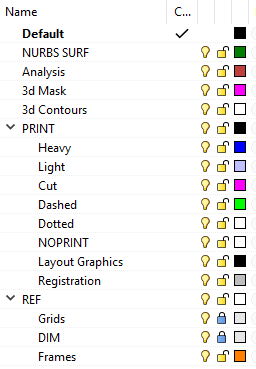
Section Lines / Cut Lines -> PRINT / Cut.
Silhouette Lines -> PRINT / Heavy.
Edge Lines -> PRINT / Light.
Contour / Surface Lines -> PRINT / Dotted.
Hidden Lines -> PRINT / Dashed.
Registration Lines -> PRINT / Registration.
Section Lines / Cut Lines
Section lines describe the boundary of any forms that intersect with the cut plane of a section. Rather than using clipping planes to produce sectioned geometry, as was employed in the extraction of drawing from the human mesh form, we take this opportunity to demonstrate an alternative approach that literally sections the object before drawing.
Finished section lines should be placed on the PRINT / Cut layer of the template file provided.
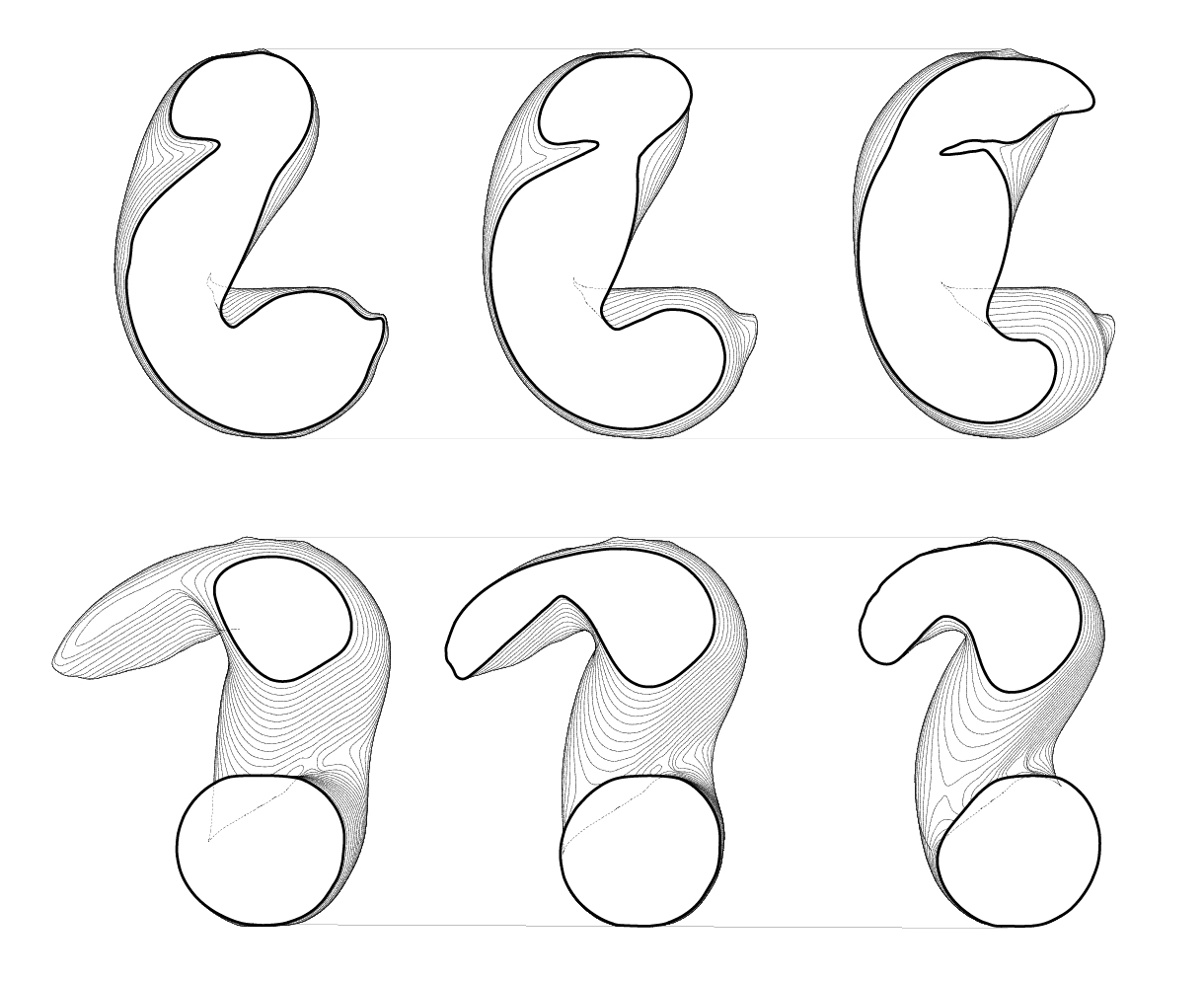
Section lines are shown in heavy lines, and are "filled" with white.
Silhouette Lines
To reiterate, silhouette lines include any line in elevation that demarcates the difference between two surfaces that are separated from one another by some distance. Put another way, a silhouette is any line with "space behind it". This is in contrast with surface lines and edge lines which distinguish two surfaces along an edge that joins them. A silhouette includes lines that describe two conditions:
Those lines which bound the overall figure against the background
Those lines that bound some element of a form that is spatially separated from but visually overlapping with other elements of that form.
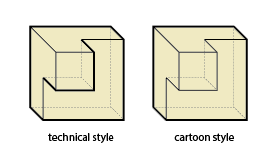
This latter category is not universally treated as a silhouette, as can be seen in the difference between "technical style" and "cartoon style" applications of line-weight in axonometric in the nearby image. Importantly, we must recognise that Rhino only produces the "cartoon" style of silhouette lines. It's up to us to correct this oversight.
Finished silhouette lines should be placed on the PRINT/ Heavy layer of the template file provided.
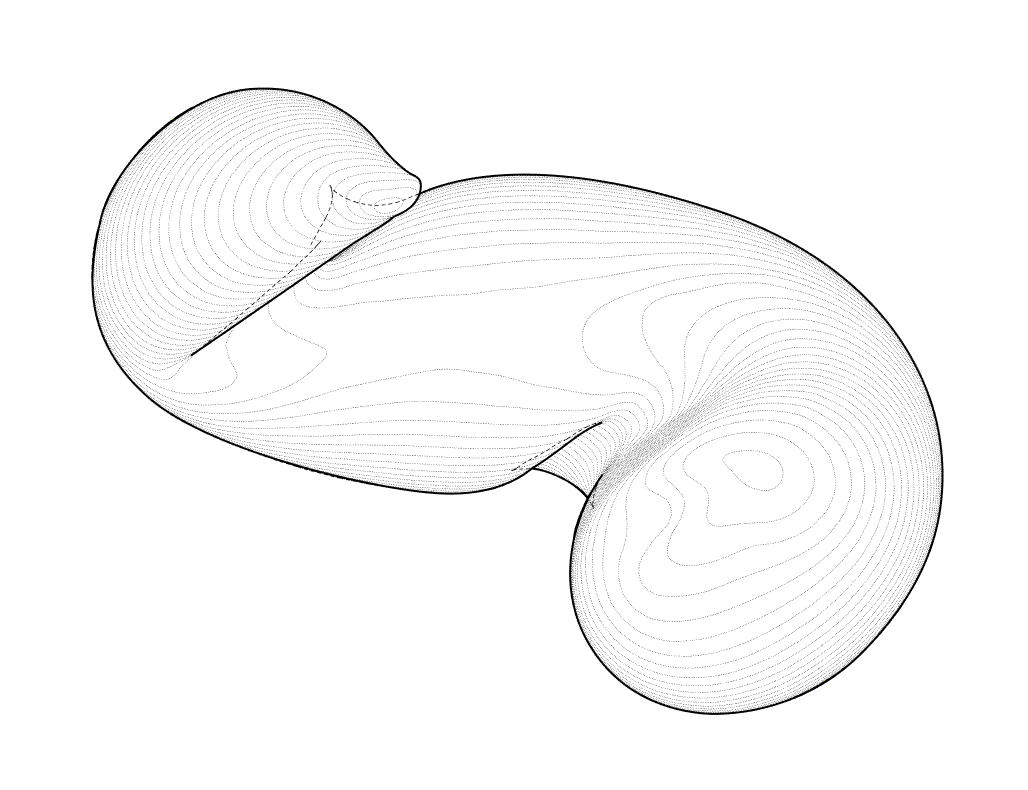
Silhouette lines show the difference between near and far surfaces with space in between, like the horizon of the earth.
Contour / Surface Lines
As discussed in our work on human forms, there exist a number of approaches to depict the texture and geometry of gently curving surfaces that would otherwise present a challenge to hard-line drawings. Here we focus on just one: contour lines.
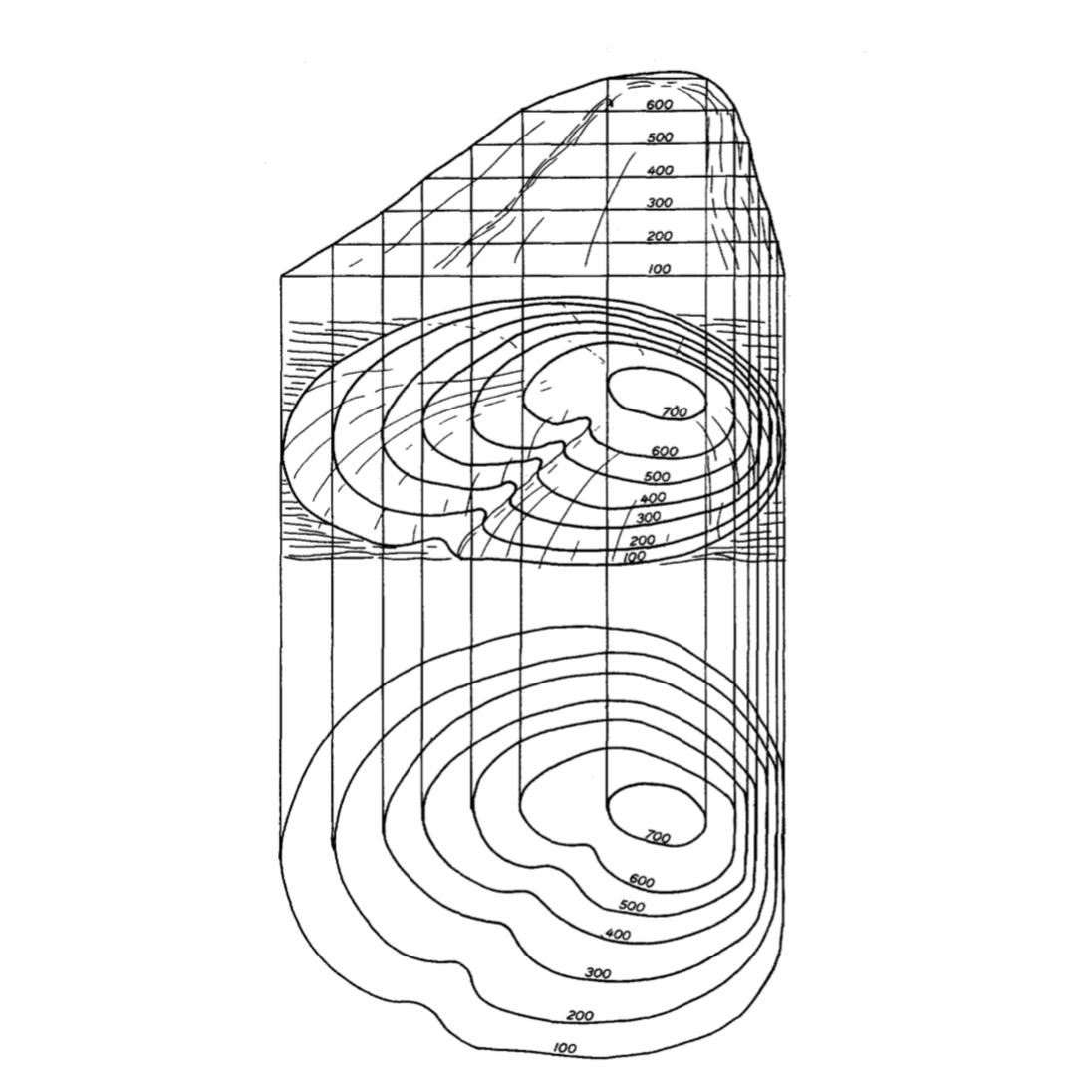
By John Rowland, 1955.

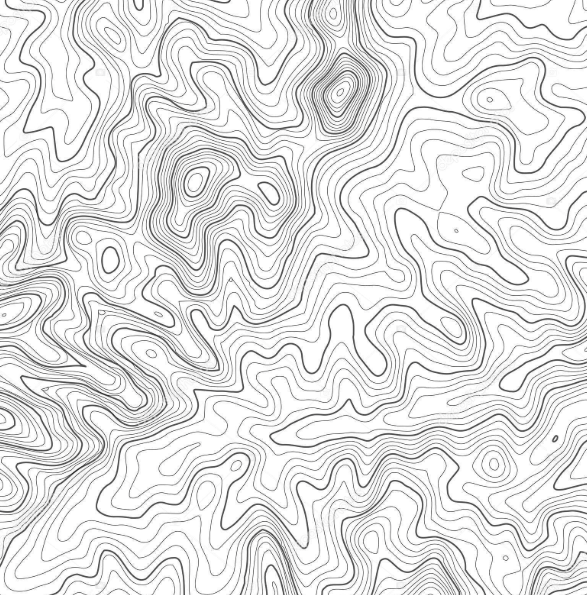
Like the lines of a topographic map, contour lines describe the geometry of a form as it intersects parallel planes at regularly spaced intervals. To produce meaningful forms, these planes must be parallel to the view plane, the way that topo lines are cut by planes parallel to the ground and seen from above.
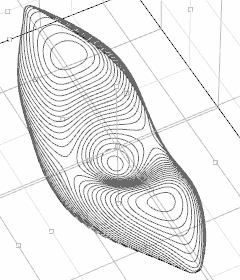
Finished contour lines should be placed on the PRINT/ Contour layer of the template file provided.
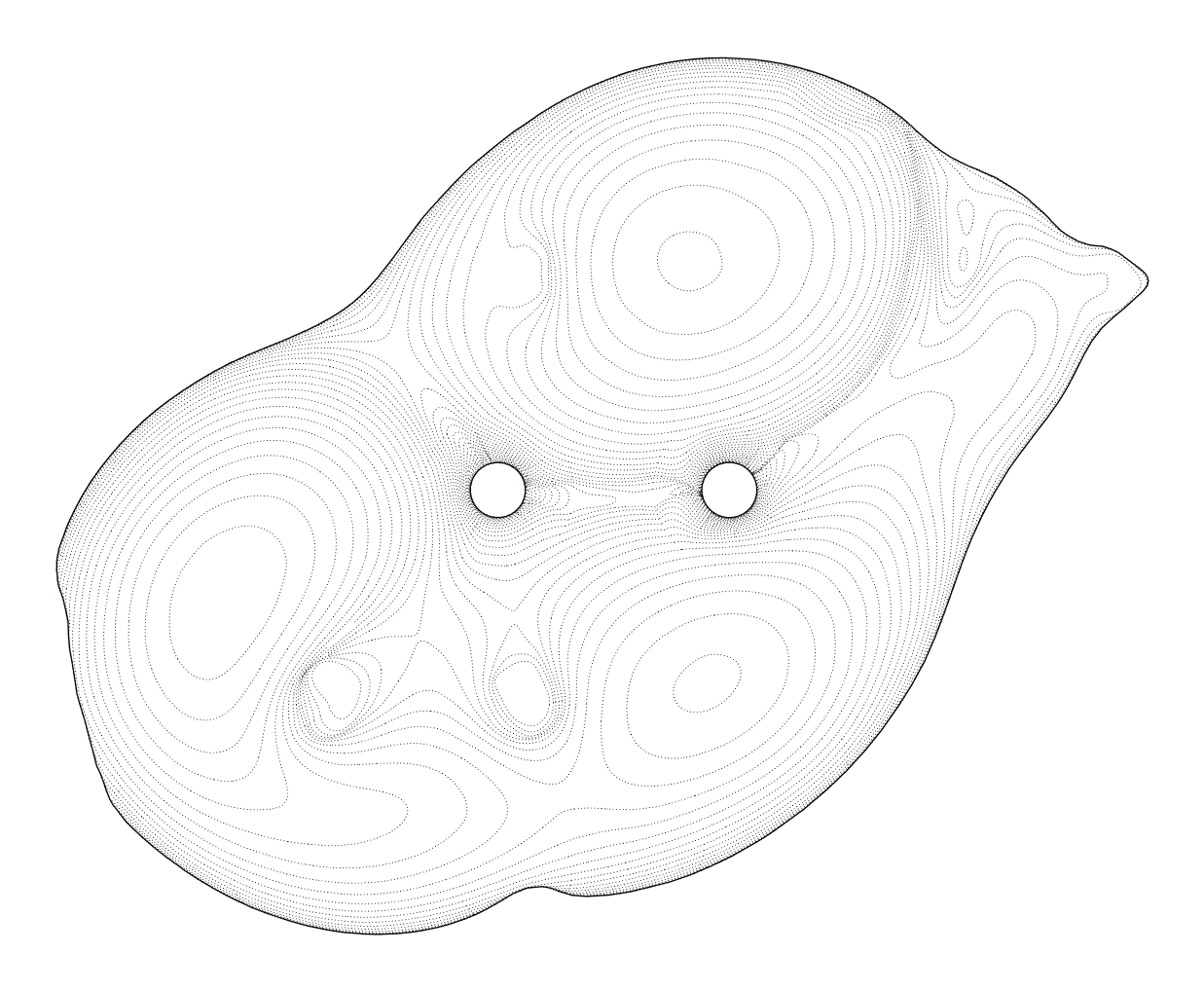
This top view shows contour lines that, when viewed from a distance, appear as tone.